What (and How) Do Monarch Butterflies Eat?
Updated: Aug. 31, 2022
If you want to help monarchs, you may ask what do monarch butterflies eat? Find out the answer and learn how to give them what they need.
With the monarch butterfly now officially on the endangered species list, many gardeners are wondering what they can do to help. One important action is to provide these butterflies with the foods they need. But what do monarch butterflies eat? And how do they feed? Here are the answers.
On This Page
What Do Monarch Butterflies Eat?
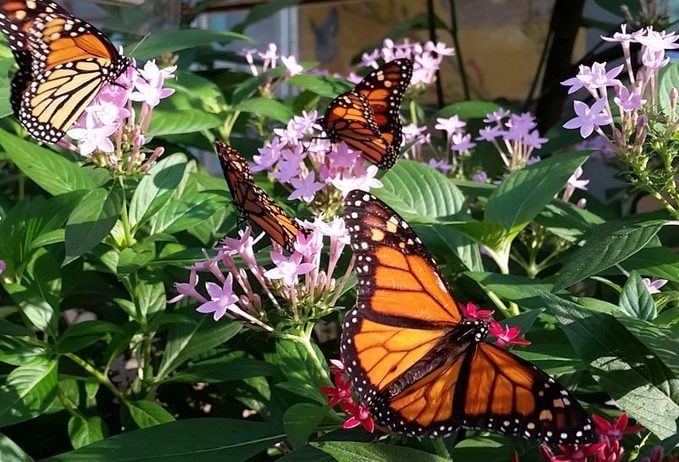
Monarchs eat several times a day to keep their energy up, though if food is scarce or the weather is bad, they can go a day or so without food. These butterflies mainly eat nectar from flowers. Most people associate monarchs with milkweed, and it’s true that their caterpillars dine exclusively on the leaves of these plants. Adult monarchs, however, will eat from a wide array of nectar plants, including the flowers of milkweed. Other favorite monarch flowers include sunflower, coneflower, ironweed, zinnia, lantana, penta, salvia, and many more.
Follow the stages of the monarch butterfly life cycle.
Do Monarch Butterflies Eat Fruit?
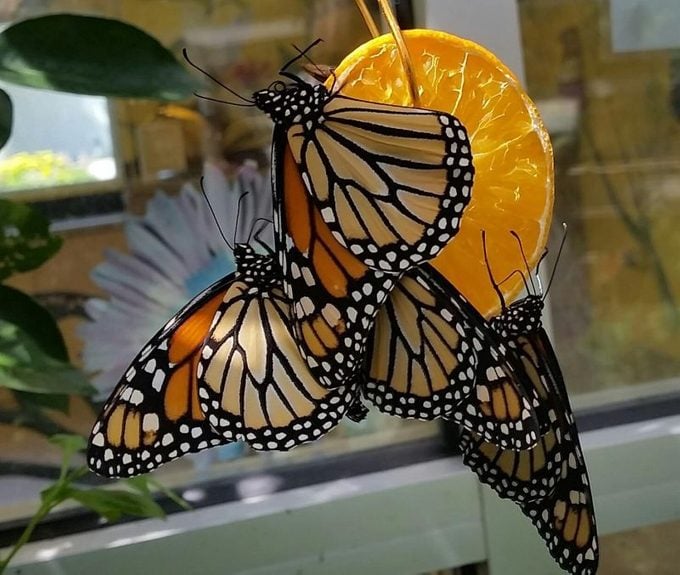
Sometimes monarchs will visit fruit to get the sugary calories they need, especially in more tropical areas of their range. They’re especially fond of oranges, mangoes, and rotting bananas. You can try putting out cut-up fruit in your garden to attract them, but they may or may not visit, especially if you have a lot of nectar flowers nearby.
Since those nectar flowers and fruit really only provide them with sugary energy, monarchs have to look elsewhere for vital salts and other dissolved minerals. One key way they do this is by “puddling,” gathering on muddy ground or wet sand to sip the nutrient-rich water. They may occasionally land on dung or carrion to find these same nutrients. They’ve even been known to land on human heads to drink their perspiration on hot days!
Learn how to make a DIY butterfly puddler.
How Do Monarch Butterflies Find the Right Plants?
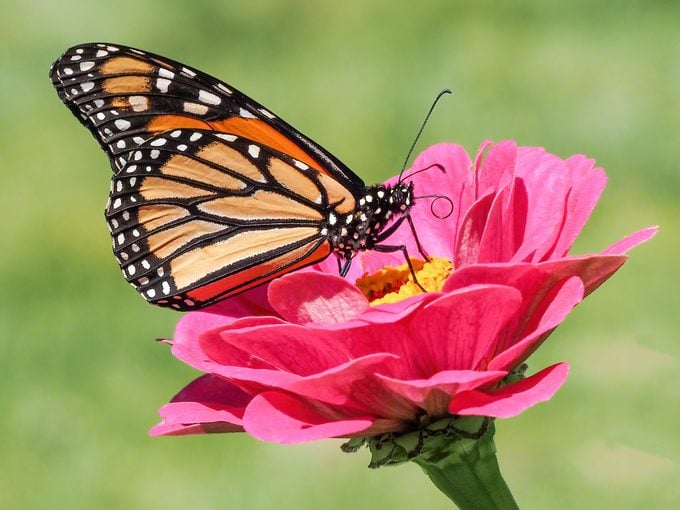
The world is very big, and monarch butterflies are pretty small. To find the right food plants, the adult butterflies rely on several senses. Their compound eyes allow them to see nearly 360 degrees around them, and like hummingbirds, have the ability to see things humans can’t. For instance, they can spot ultra-violet markings on some plants that lead them straight to nectar sources.
Butterflies like monarchs actually “taste” with their feet. These are covered in tiny chemoreceptors that allow them to sense sugars the sugars and salts their bodies need. By landing on a surface for a split second, monarchs and other butterflies can instantly tell whether there’s something there to eat (and in the case of females, lay their eggs on).
Do monarch butterfly sightings have meaning?
How Do Monarch Butterflies Eat?
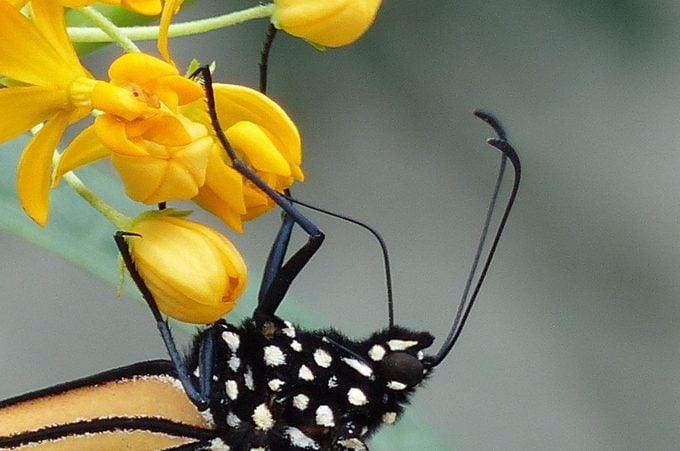
Now that you know the answer to “what do monarch butterflies eat,” you might be wondering just how they do it. Like all butterflies, monarchs do not have mouths. Instead, they have a proboscis (pronounced “pro-BAH-skiss” or “pro-BAH-siss”) extending from the front of their head. The proboscis is a straw-like tube that coils up when butterflies aren’t using it. Monarchs eat by extending the proboscis deep into a flower to sip nectar, or use the sharp pointed end to poke into fruit to dine on the juice.
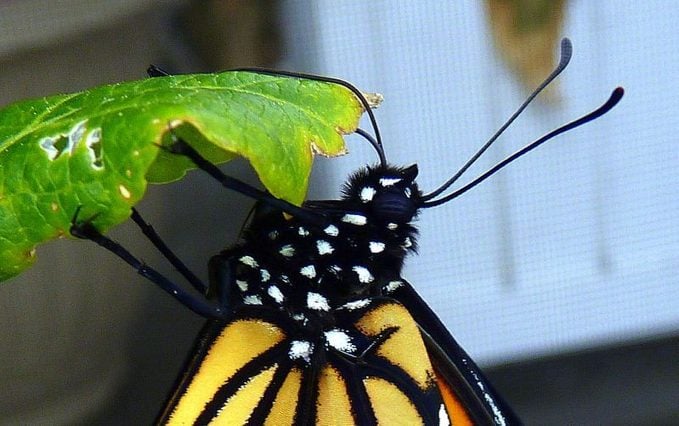
The proboscis is actually made up of two separate tube sections that “zip” together to form a continuous channel when a butterfly first emerges from chrysalis. You can see the connection in this microscope image of a butterfly proboscis. Monarchs and other butterflies can “unzip” it for cleaning if they need to!
Once the proboscis is deep in the flower or fruit, a tiny sac in their head helps its muscles expand and contract to pull the nectar or sugar water in by suction. When they’re done, they’ll sometimes use their feet or another object to clean off the proboscis before coiling it up out of the way to fly.
Is tropical milkweed bad for monarchs?
How Can Gardeners Provide Food for Monarch Butterflies?

To make your garden a haven for monarchs, take these steps:
- Plant as much native milkweed as you can. Gardeners may want to try common milkweed, swamp milkweed, butterfly weed and showy milkweed. Also visit a local native plant nursery to ask for their recommendations.
- Fill your garden with nectar plants, preferably native ones that will thrive with little need for fertilizers or supplemental watering. Be sure to include choices that bloom in early spring and late fall to help migrating monarchs on their way.
- Avoid pesticides whenever possible, and look for plants raised without the use of neonicotinoids.
Monarchs are some of the most beloved butterflies on the planet. With a little help from us all, they can survive and thrive, now and in the future.
Next, don’t miss 20 must-see pictures of monarch butterflies!




















